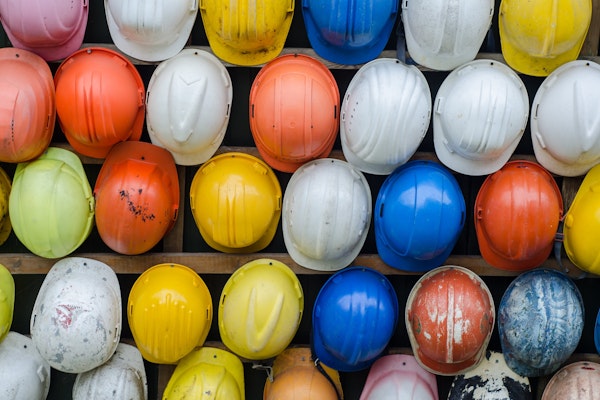
9 Months On: COVID And Workers’ Comp
The COVID-19 pandemic has been with us for over nine months now, with no end in sight. During this time, we conducted several Out Front Ideas COVID-19 Briefing webinars and The Path Forward virtual conference. These educational events were designed to provide risk managers and others in the industry with a better understanding of how COVID-19 was hitting our industry.
November 17, 2020
Workers' Compensation

The Workers’ Comp Claim Process Went Virtual Long Before COVID
I was on a panel yesterday as part of the National Workers’ Compensation Defense Network (NWCDN) Annual Conference. We were discussing life now and in the future in the “virtual world.” At one point the topic turned to the challenges of claims management in a virtual environment.
November 16, 2020
Technology
Workers' Compensation

Cost Of Workers’ Compensation In US Falling, But Coverage Is On Its Way Up
The cost of workers’ compensation in the United States is steadily dropping, even as the coverage it provides appears to be rising. The Workers’ Compensation Benefits, Costs, and Coverage report examined data from 2018, comparing it with updated data for 2014 through 2017.
November 13, 2020
Workers' Compensation

Why The Status Quo In Workers’ Comp Will Not Succeed In Attracting The Next Generation
Relationships are the most important factor in the workers’ compensation industry. Humor me for a moment and reflect on how you came into this space or why you stayed.
November 6, 2020
Workers' Compensation

The NWCDN Conference And The Benefits Of A Virtual World
The planning and work have been intense. Multiple stages running simultaneous events. State and regional workers’ compensation updates. Excellent speakers. Even a series of video shorts discussing what industry experts have learned from COVID.
November 5, 2020
Workers' Compensation

CA Claims Adjuster And Chiropractor Co-Conspirator Arrested In $1.6 Million Fraud
Claims adjuster Agop Sarafian of La Crescenta, and chiropractor Shahe Topjian, D.C. of Granada Hills were recently arrested on felony insurance fraud charges after allegedly conspiring to defraud Sarafian’s employer, the State Compensation Insurance Fund (State Fund), by setting up fake workers’ compensation lien payments to receive undeserved insurance payouts of over $1.6 million.
November 3, 2020
Fraud
Workers' Compensation
California

Medical Care And Return To Work In The Age Of COVID
On September 24, the Workers Compensation Research Institute (WCRI) president and CEO John Ruser led a webinar on the delivery of medical care and return to work in the COVID-19 era.
October 27, 2020
Workers' Compensation

New AI Model Helps CCMSI Seal The Cracks In The Claims Cycle
CCMSI, a large boutique third party administrator (TPA), has been providing innovative risk management solutions to thousands of companies for more than 40 years.
October 27, 2020
Liability
Technology
Workers' Compensation

Police Chief Crushed By Falling Corpse Faces Workers’ Compensation Fraud Charges
If ever there was a headline that made you look at an article, the one appended to this post is probably it. This story has it all.
October 20, 2020
Fraud
Workers' Compensation
Washington

The Paths Of Chemical Exposure
The Safety Hierarchy states that hazards should be mitigated first by engineering controls, secondly by guarding, and lastly by warning/training. When the first two, engineering controls and guards, fail in a manufacturing setting, a chemical release could occur.
October 13, 2020
Education & Training
Workers' Compensation

OCIPs, CCIPs, And Wrap-Up Insurance: The Lesser-Known Subrogation Obstacles
Workers’compensation subrogation has another growing adversary—one that can slip in during the cover of night, gutting subrogation, and reimbursement rights, even after an insurance company or third-party administrator has spent thousands of dollars in recovery efforts.
October 7, 2020
Subrogation
Workers' Compensation

State Presumption Rules Throw Wrench Into Workers’ Compensation
The saying, “We’re all in the same boat,” hasn’t necessarily been true of the COVID-19 pandemic and its impact on workers’ compensation in the US.
September 25, 2020
Legislation & Regulation
Workers' Compensation

Mega Claims In Workers’ Compensation: The NCCI Weighs In
The National Council on Compensation Insurance (NCCI) released a new report on August 25 about mega claims in the workers’ compensation system and growth trends associated with the highly uncertain category, revealing that such claims are at a 12-year high.
September 24, 2020
Workers' Compensation

A Study On Expanded Use Of ‘Presumption’
The COVID-19 pandemic has effected fundamental changes on society, business and our very existence. It perhaps cannot yet be characterized as the equivalent of the plague, cholera, smallpox or even some historically significant influenza strains.
September 21, 2020
Legislation & Regulation
Workers' Compensation

Cranes Collide At Austin Construction Site
Two cranes collided and at least partially collapsed at a construction site in Austin, Texas, on Wednesday, injuring at least 22 people, authorities said.
September 16, 2020
Workers' Compensation
Texas





